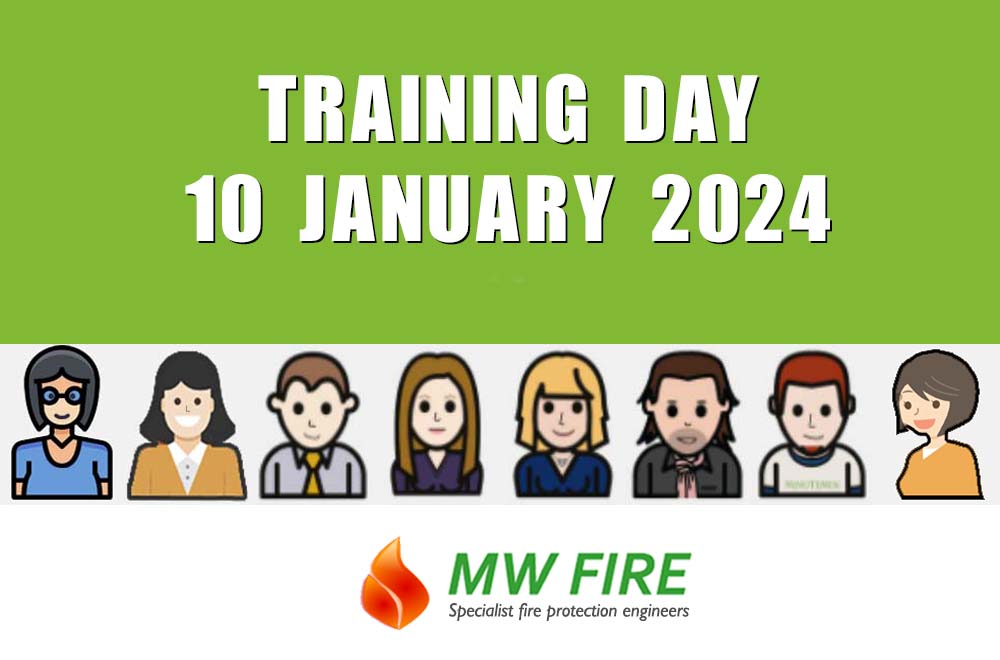Haydon Hill centre
It was a small venue for such a big day and we were fortunate to secure it as it was fully booked for January and we took the last open spot. There were larger facilities available, including one in the centre of town managed by one of our clients. But just 5 minutes from head office, Haydon Hill Community Centre was clean, warm and just cosy enough to host our eventful day.
The agenda was tight, and the planned hour-long discussion on vehicle maintenance took a back seat on the day, because there was a pressing need to discuss some recent projects. In fact, at the eleventh hour we realised there wasn’t enough time for all the planned training and it was BS5839 updates that drew the short straw, as operatives would soon start training for the FIA Fundamentals soon. The backup modules were therefore not needed; Working at Height Basics and An Introduction to Manual Handling; which will surface on a rainy day soon.
We could have done with three days really, to cover the prepared material, such was our desire to start the year off with a general grounding in all things under basic Health & Safety. Eventually the right mix was settled on and the training day was a success as well as offering a rare opportunity for everyone to get together under the same roof.
“It was a structured day that included all of the modules that we thought were the most relevant. Basic First Aid was the main training that I wanted to give to our team as I believe it is essential that they know how to react in case of an emergency happening in the workplace.“
— Elizabeth Walker
FORMS
The morning session started with a short video on some common forms familiar to all, such as the H-Certificates. The ‘H’ prefix is a legacy from the days when MW Fire were ISO (International Organization for Standardization) accredited, and the file names have remained ever since, the H has no other significance than that. These and other forms are scheduled to be revised sometime this year.
The talk on ‘Forms’ had a simple message, in that we all use the medium of forms to exchange information. They exist to manage and make things efficient. It’s a wonder that we so often need to be reminded to work tidily and to employ good housekeeping, these things pop up here and there and much of it is do do with organising the paperwork.
A limited company is compelled to keep various financial and operational details for at least six years. This is done to comply with the law. However the majority of paperwork generated, or diligently produced throughout the year, is done to provide evidence of Health & Safety for our clients. It also serves to state the policies towards the welfare and rights of employees, the care of the environment, the quality of products, etc., for the purposes of joining organisations such as ISO and BSI or trade bodies and industry organisations (e.g. BAFE, SafeContractor).
Hopefully, the talk helped to bridge a gap in understanding and towards consideration of our role in the lifecycle of a core form such as an engineers’ maintenance report or Project Manager’s installation certificate. Being knowledgeable and expedient pays dividends as it leads to good results in the future when we need to provide evidence to third parties for insurance purposes, trade memberships, and Health & Safety audits.
BASIC FIRST AID
This was by far the most popular course of the day. It was presented by Jacqui from Trainingsmith who tailored the session to provide plenty of hands-on practice.
“I was a St. John Ambulance cadet as a teenager but it was a long time ago and there have been a lot of changes to the way things are done since then and I’m quite glad I had the opportunity to have this training. I thought the course was quite comprehensive; the bit about heart attacks was particularly interesting.“
— Darren Robinson
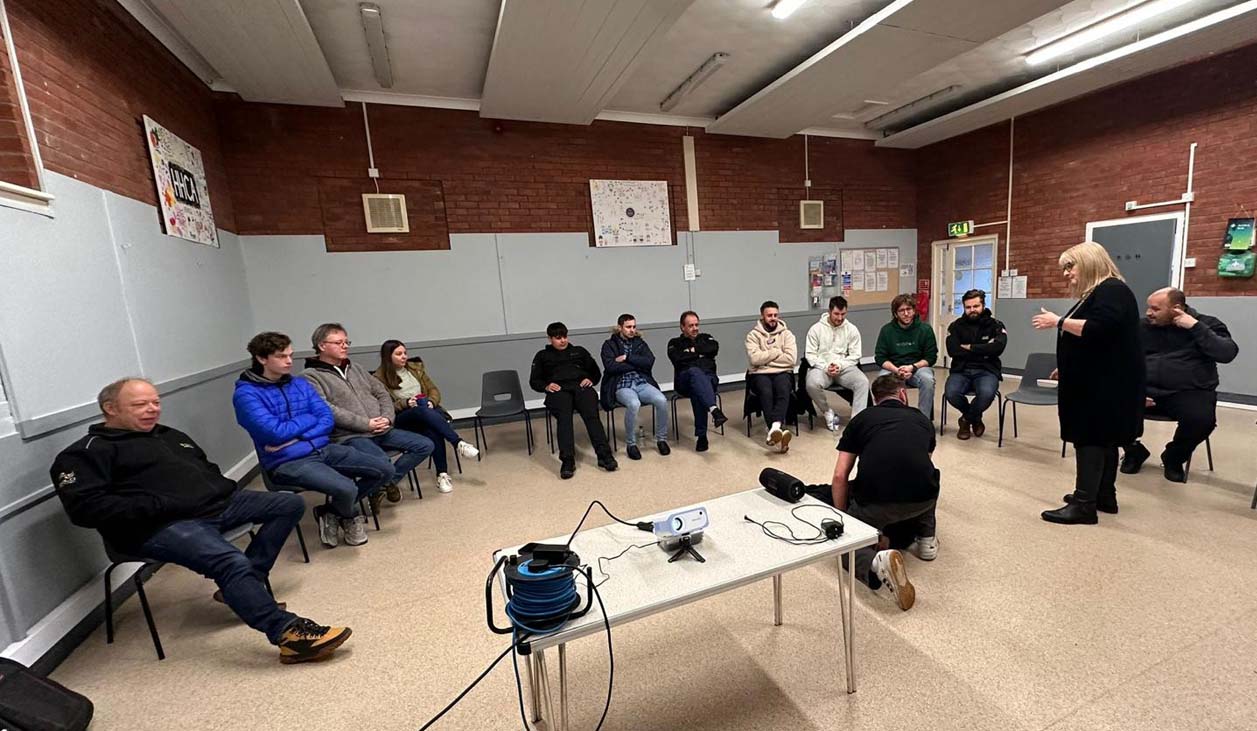
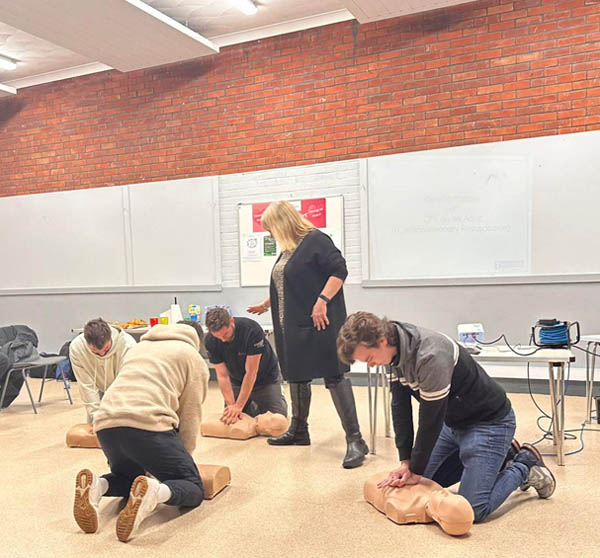
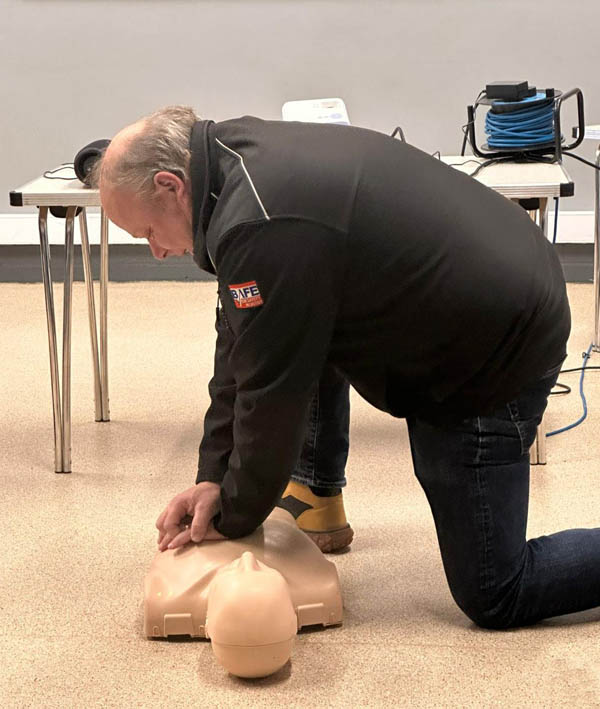
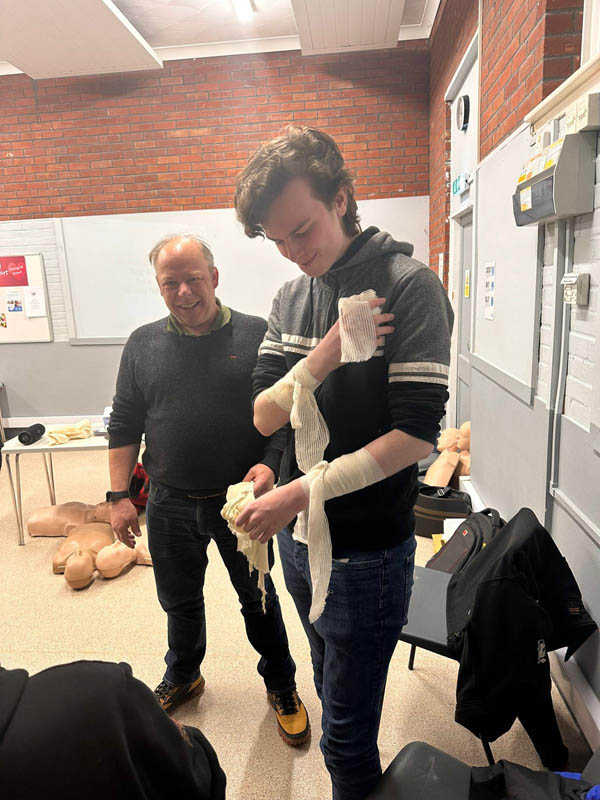
GDPR (General Data Protection Regulations)
Perhaps this topic was a little heavy going for an afternoon session but it was nonetheless an important training module for obvious reasons. ‘Obvious’ because like the earlier discussion about Forms, everyone in the Company is handling information in the course of performing their job. There are legal obligations and ethical practices that determine how we should handle information about workers and clients with respect. Especially nowadays that we live in a world where privacy is slowly being eroded at every turn.
This course too, was rather crammed with all the items essential for a basic understanding of GDPR which needed to fit the 25 minutes timeframe allotted for it. Hopefully some if not all of the underlying messages hit home and something was learned from the presentation.
Asbestos Awareness (Refresher)
The main difference between this presentation and previous Asbestos Awareness training was that this one was done using a presentation with a voiceover instead of just a series of slides with a simple multiple choice at the end. This was a refresher course and so only the important points needed to be gone over. This provided the opportunity to slip in some examples of asbestos in the workplace with plenty of images, a video, and a closer look from the perspective of a professional asbestos removal company.
some attendees did not have the full asbestos training due to the MWF Training website being currently under development, but this refresher was comprehensive enough to satisfy auditors that these people have received adequate awareness of asbestos in the workplace.
In our conversations with some of the trade associations, we have sometimes agreed that much of the online asbestos training is not up to scratch, they will show maybe 12 slides and present a 5 questions multiple choice at the end. For this reason we prefer to see asbestos awareness certificates taken with, not just approved centres, but through industry leaders such as RoSPA. Ideally though, we believe our asbestos presentation is second to none and would therefore encourage you to obtain the certificate with MWF Training, as it is much more comprehensive and harder to complete.
Feedback
Everyone had a copy of the agenda which provided a URL to an anonymous Google feedback form. This is usually the thing that people don’t bother with, and in fact just 10% will typically use it if you’re lucky. In truth though, feedback is a very useful indicator of how things could be improved for the future. If you found the day boring then there’s no harm in telling us why you disliked something, which will hopefully turn out in the long run to improve training overall and your experience.
So, the prediction for feedback was 1.5 people out of 15, meaning one or two replies should have been expected. In fact 3 were received initially which is 20%. What this revealed is to place greater emphasis on feedback on future training events. We do not need to know who you are, only what your opinion was. A final reminder from Elizabeth should have solicited a few more responses but, wow!, when next it was checked there were no less than 10 responses waiting, that’s a whopping 66.7% response rate, and thanks to everyone for that.
Without further ado, let’s take a look at the feedback to see what we can learn from analysing this.
In the image below you can see 10 Responses. 8 out of 10 people enjoyed the day. This is the main indicator that the event went well with no one giving a negative experience. It doesn’t account for the 5 persons that did not provide any feedback and who may well have hated every minute. But that assumption would be pushing the boat out too far and I’m sure you will agree that it would be fair to say, that if those 5 persons had provided feedback, then more than likely it would have been on the positive side.
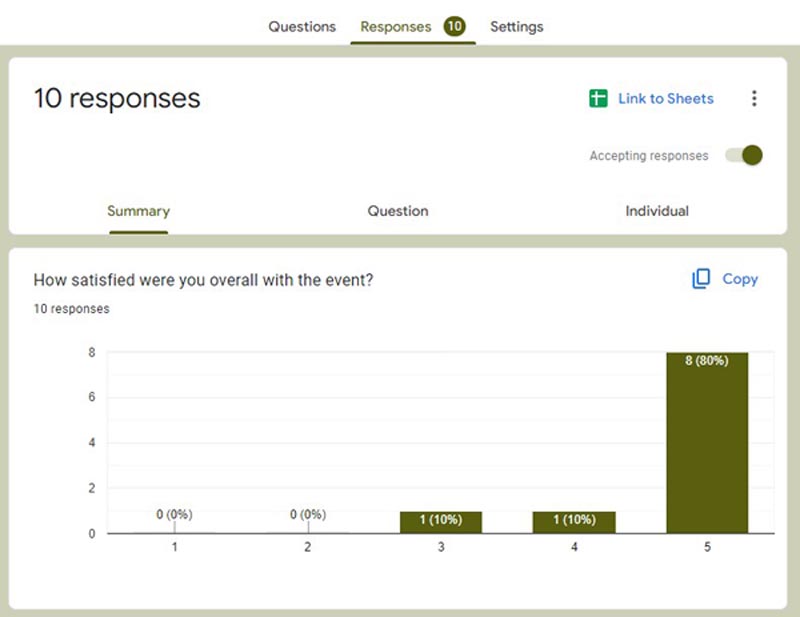
Now take a look at the relevancy chart below, which is the most significant indicator for us having put the courses together based on what we believed the most needed components were. We can see that the attendees were of the opinion that the material was relevant to them. Bear in mind that nobody knew exactly what was planned for the day until they first saw the agenda that morning.
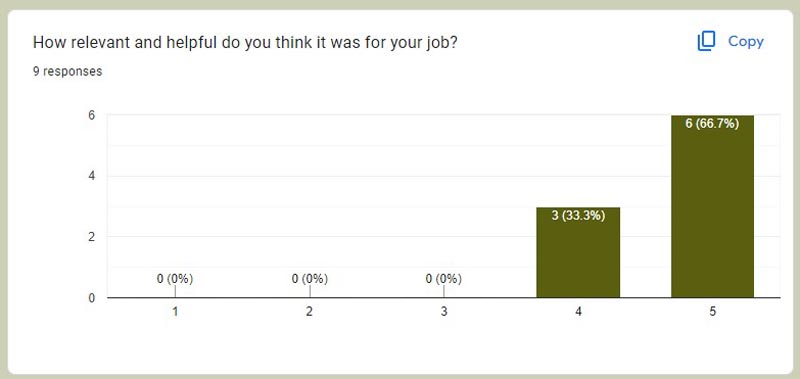
Another view on relevancy below. This bar chart does not tell what module was more popular, instead it looks at each module individually for relevance. It shows the sharp contrast between GDPR compared to the other modules.
We can see that all but one person agreed that modules were relevant, If it was the same person across the modules, then that person would appear to have not seen any relevancy in the Training Day at all. This is one reason why anonymous feedback is important so that this type of sentiment can be picked up and addressed.
Sometimes feedback reveals surprises. For GDPR, here we see only 4 people thought it was relevant to them and 6 people said it was not. It was in fact meant to be the main topic because Data Protection is so important, but the feedback reveals that we need to present this topic in an entirely new and engaging way, in future.
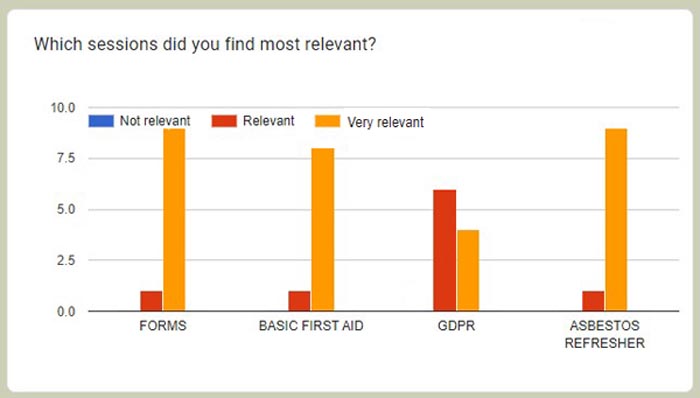
Overall, how helpful were the Training day modules and was there anything learned from them generally. See the two images below for the responses:
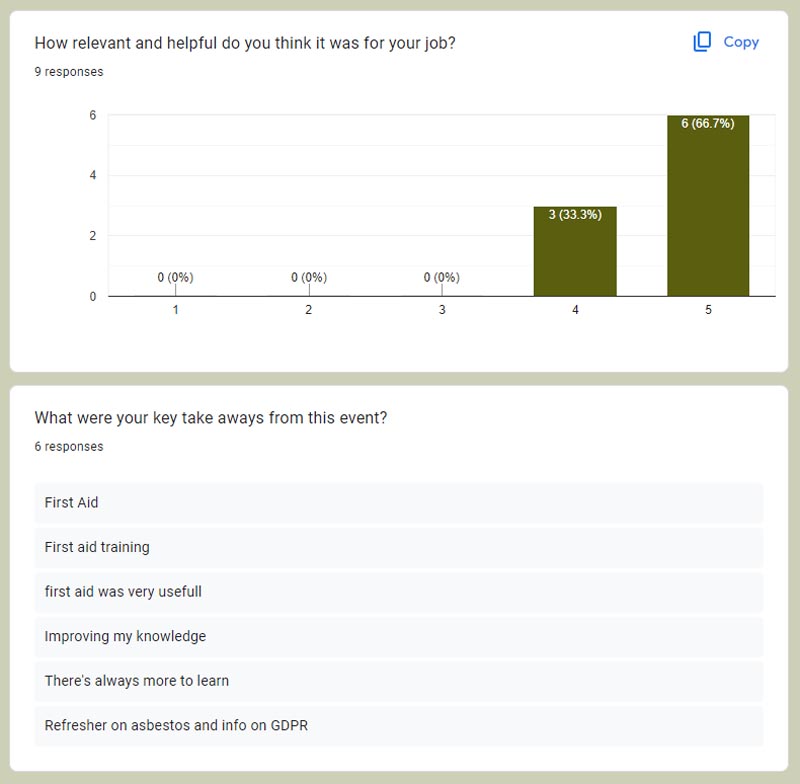
Any overall feedback for the event?
Here are a few of the final comments left at the end of the form:
- “Well worth the attendance”
- “Very satisfied”
- “Useful, GDPR not much interest from the rest and not sure if they understood, for office staff it made more sense, how it affects them directly.”
- “The Data Protection part the lady spoke at times too fast. In the asbestos it said in the corner Part 4 and the next slide it was Part 3; one part it said a ffp3 mask is required and the picture was then shown with a man wearing a paper mask.”
Thanks to everyone that provided feedback, as you can see, it was extremely helpful.
In Summary
The attendees for Training Day 2024 were from all the Company so the training had to reflect this. It’s to be expected that field operatives might find GDPR not very appropriate to their day-to-day activities. Likewise, office based staff might not hold asbestos awareness with the same regard as operatives that work at a CDM site.
This was the problem, to cram in as much as possible into every module, which actually goes against the principles of designing these presentations, where usually it’s better to be short and sweet. This is something to be addressed for future training.
For every training module the breakdown was roughly 50% of people that already had a certificate in that topic with the rest hearing it for the first time. For example, for GDPR, there would have been roughly 5-7 people that already had a GDPR certificate, and perhaps 7-8 that had not had any previous understanding about GDPR.
As for feedback, as you saw above, it gave a pretty rounded summary of the day. It’s safe to assume that 14 people enjoyed the day, and 1 person didn’t. It’s safe to assume that most people didn’t get on well with GDPR. As one comment stated, “the lady spoke too fast”. As this was the first module completed, the timing was not quite right, apologies for that, but the other modules that followed, did have the speech slowed down so hopefully they were okay.
The asbestos course did indeed have the wrong Part Numbers in the top right corner of the slide. On further investigated, it was wrong in several slides, so thanks to the feedback, this has now been corrected; a bit too late now though, but means in future these things will be double-checked.
Regarding the discrepancy of the type of face mask, that was pointed out – was it about the image below?

The image was used from a website of the professional asbestos company where we grabbed the story. It does look like an FFP3 mask due to the nose clip and the protrusion for the mouth filter, however you may have meant that it should be an RPE respirator type.
As the MWF Training website develops, the goal will be to continue to make training simpler and easier to digest. If we don’t succeed at making the experience enjoyable then maybe we can strive to make it more interesting.


